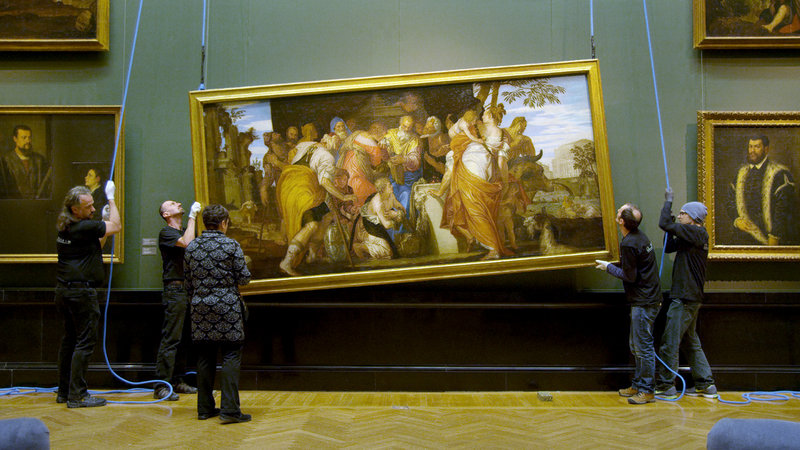Showing Sat 11 Oct and Sat 18 Oct as part of London Film Festival 2014
In select cinemas nationwide from Fri 12 Dec
Johannes Holzhausen / Austria / 2014 / 94 mins
When he began this project, filmmaker Johannes Holzhausen’s ‘initial idea was to make a film essay that would mix aspects of a number of different museums to create one fictional museum’ – yet he was persuaded by his co-writer, Constantin Wulff, ‘that [he] already had everything [he] was looking for in the Kunsthistorisches Museum.’ And indeed he does: in The Great Museum, Holzhausen delves into the multiple revolving spheres which operate within the museum’s infrastructure, transporting the viewer from realm to equally enchanting realm.
The vast, white, clinical studio where pottery fragments are stored; the diligent and industrial sized storage holding for paintings; the maze-like, wood-panelled galleys for storing sorted coins. The Great Museum offers a glimpse into a domain of rich yet muted colours: delectable artefacts, clearly informed by Holzhausen’s own art history background. In this way the film offers a kind of Wes Anderson aesthetic – or exposes the sort of world from which the director might take inspiration. Holzhausen’s film portrays the fading Austro-Hungarian glamour on which Anderson’s latest production, The Grand Budapest Hotel, is based and details an attempt to market this to a modern audience.
The contrast between visual luxury and the fierce industry behind it is fascinating. Holzhausen exposes the hive of activity and drama beneath the silent and impressive veneer of the museum – all the explosive, petty and tragic events that happen within its walls. Each is discrete, however, kept within the confines of the individual concerned’s own department. What Holzhausen so effectively communicates is the magnificent size of museum and, as such, the dislocated nature of the community it houses. As the complaint of one indignant Visitors Team member highlights: ‘I’ve worked here for eleven years and still haven’t been introduced to someone from another department.’
Holzhausen observes as staff grapple with the artistic and social issues central to any museum: the politics behind exhibitions, displays and conservation. He presents the concerns thrown up by art history theory in practice, focusing on new General Director Sabine Haag’s attempt to rejuvenate the museum. Tensions between business and art, the elite and the masses, marketing and authenticity drive the narrative. Intellectually engaging, socially interesting and visually beautiful, Holzhausen’s film is a wonderful escape to another world.
